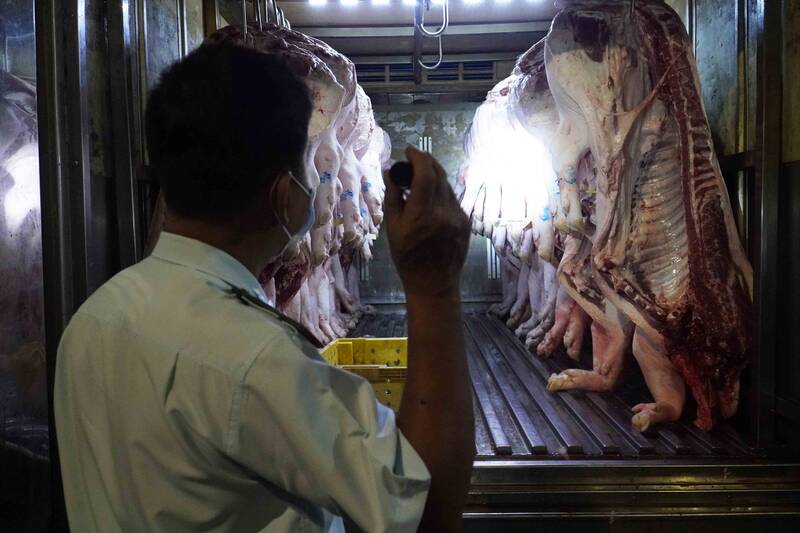Supply chain transparency
Strict control from production to distribution not only helps ensure food quality and safety but also contributes to building long-term trust with consumers.
Right from the production stage, enterprises such as Vietnam Infrastructure and Investment Joint Stock Company (Vissan) have proactively implemented a closed control model "from farm to dining table" to ensure food safety and maintain consumer confidence.
All pigs provided by Vissan are raised according to VietGAP standards, with QR codes to trace the origin and manage information using TE-FOOD technology. The slaughter process is carried out on a modern industrial line; the after- slaughter meat is snored, packed in trays, stamped for traceability and refrigeration at the selling point.

To ensure the quality of goods and food safety in the entire retail system, Mr. Vu Duong Quan - Head of SATRA Retail System Management Board, said that all goods wanted to enter this system must meet full legal documents, quality certification and clear information about origin.
In particular, for fresh or high-risk food items such as meat, eggs, vegetables, processed products, etc., quarterly testing is mandatory. At the same time, SATRA applies digital technology in supply chain management, traceability and file archiving to ensure transparency and tight control at each stage.
Strengthening inspection in a wide area
Discussing the work of inspecting and supervising food safety in Ho Chi Minh City after the merger, Ms. Pham Khanh Phong Lan - Director of the Department of Food Safety of Ho Chi Minh City said that for continuous regular activities, the unit will divide the area and divide it into food safety management teams under the Inspection - Legal Department. Of which, there are 3 teams at 3 unit markets and about the remaining 11 teams are in charge of areas equivalent to 12-15 wards.
These teams are the "extended arm" of the department, taking on all the work from monitoring the facility, taking samples for testing, periodic inspection, training to handling poisoning. Even though they no longer have the function of specialized inspectors (as moved to the city level), the teams can still conduct inspections and penalties according to Decree 15.
The unit conducts periodic inspections, surprise inspections and thematic assessments at each stage. Ho Chi Minh City is the only locality that can organize simultaneous inspections of a single item in the entire area. This helps prevent the circulation of goods for "taking" inspection.
Ms. Phong Lan emphasized that the biggest difficulty is still controlling covert establishments operating in residential areas. Without the cooperation of the people or the press, it is difficult to detect violations.
Ho Chi Minh City also expands the inter-provincial safe food chain. This model has previously operated effectively with Lam Dong province and is now being re-signed with the two new provinces and cities after the merger. Expanding the chain helps control supply from the beginning, avoiding the situation where unsafe food "tays" the city to smuggle through border provinces and then return. In particular, for areas like Binh Duong (old) where many industrial parks are concentrated, the unit will focus on the topic of workers' meals. In Ba Ria - Vung Tau (old), the focus is on food for tourism.
